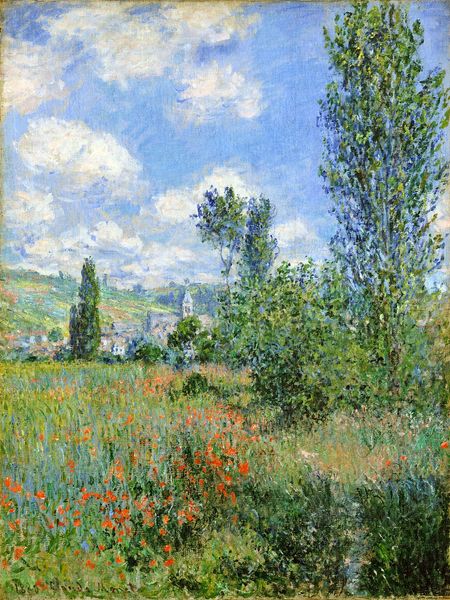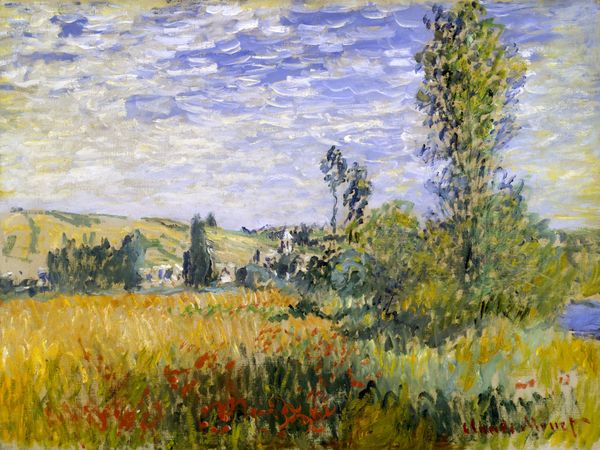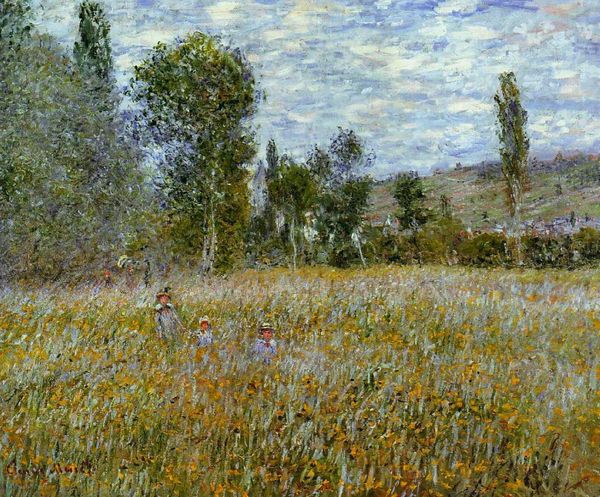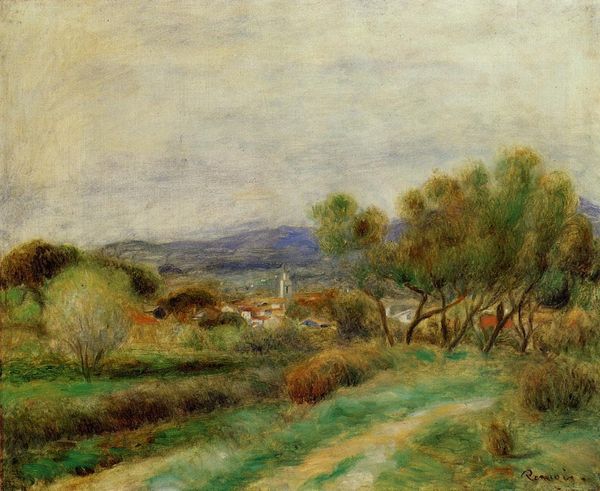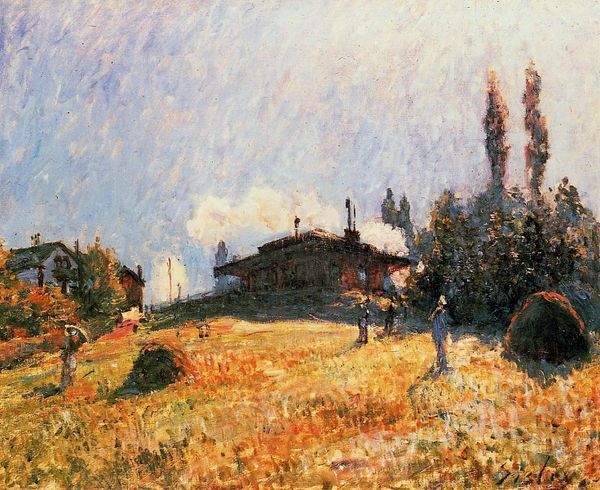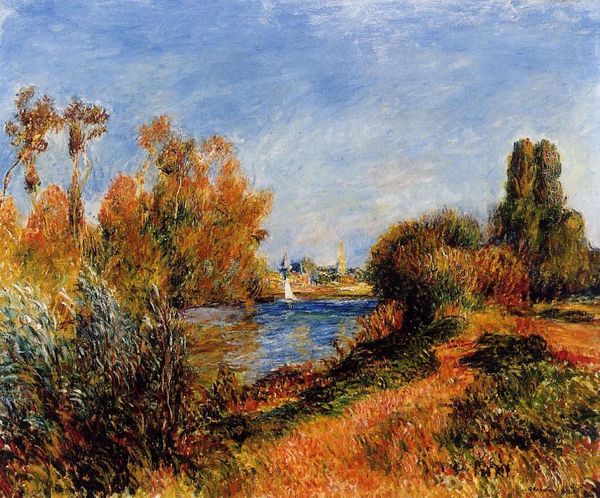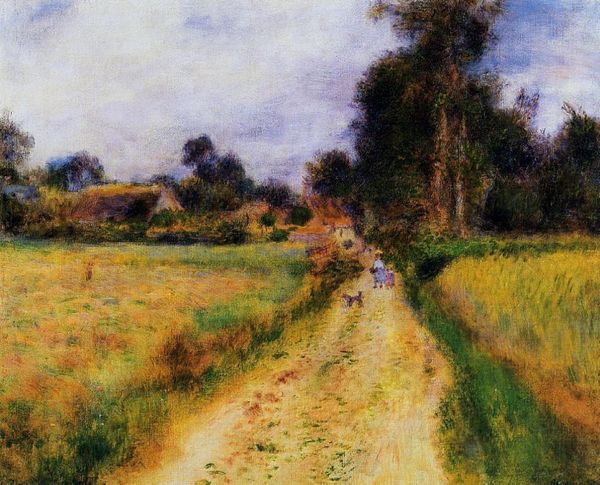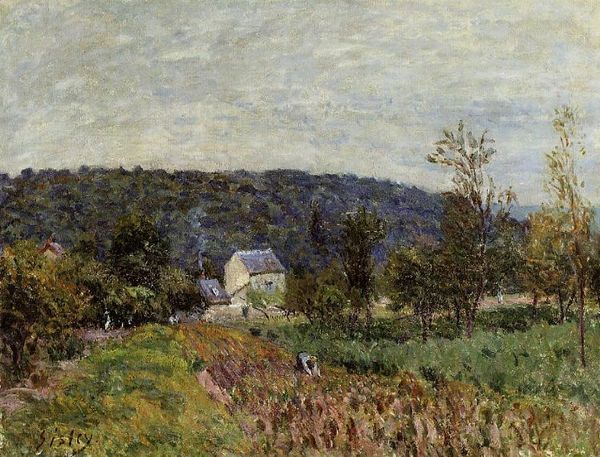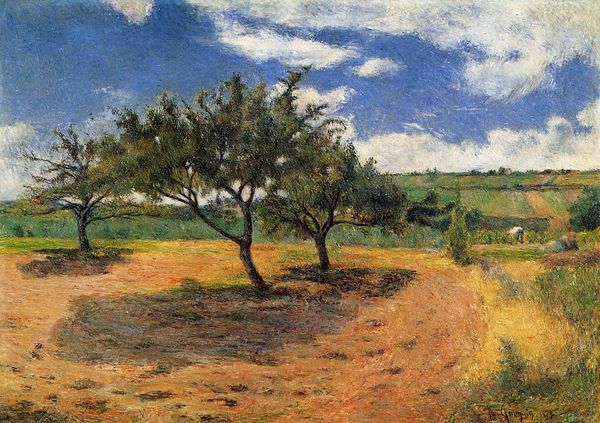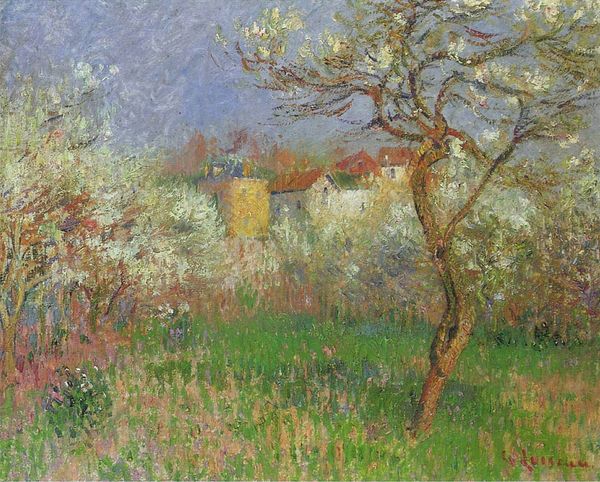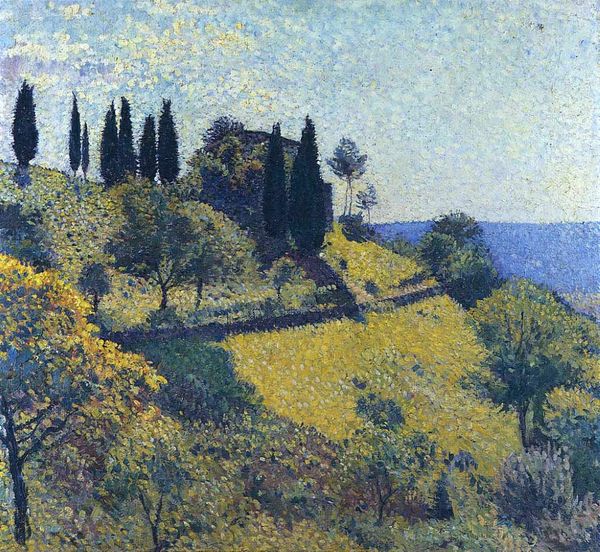
painting, plein-air, oil-paint, impasto
#
tree
#
sky
#
painting
#
impressionism
#
french
#
plein-air
#
oil-paint
#
landscape
#
impressionist landscape
#
nature
#
oil painting
#
impasto
#
nature
Copyright: Public domain
Curator: We're standing before Claude Monet's "Landscape on the Ile Saint-Martin," painted in 1881. Editor: My immediate impression is of summer haze, vibrant fields rippling in the heat under that intensely blue sky. There's a striking contrast. Curator: Indeed. The impasto application of paint creates a palpable sense of texture and movement. Note how Monet employs short, broken brushstrokes, building up layers of color. It's an Impressionist technique designed to capture the fleeting qualities of light and atmosphere. Editor: I'm fascinated by the materiality itself – the labor involved in the plein-air painting. To witness nature firsthand, translate its essence onto the canvas, using premade pigments, carefully chosen brushes – these were novel industries. And the carriage of the easel! Consider Monet returning from the Ile Saint-Martin, oils drying as the horse plodded home. Curator: A compelling point. But I'm more interested in how Monet uses compositional elements to draw our eye. See how the verticality of the trees anchors the composition, creating a counterpoint to the horizontal expanse of the field. The chromatic harmony reinforces the overall sense of tranquil balance. Editor: Tranquility born from very modern methods. Consider how revolutionary it was to produce paints on such scale – it freed artists from centuries of studio-bound craft. Now the countryside becomes a mobile atelier! The production shapes the vision, certainly. Curator: Perhaps. Still, Monet's deliberate arrangement of forms and colors speaks to an aesthetic program rooted in formal concerns, regardless of material circumstance. There is an inherent harmony outside production. Editor: But, isn’t that harmony revealed through the specificities of production, its accessibility? A field of quickly applied reds and yellows became newly visible, thanks to progress! Curator: An interesting perspective, perhaps more biographical than textural. Though, regardless of production methods, its subjective vision is undebatable. It captures a moment, suspended forever, regardless of means. Editor: Precisely. An intersection of labor, pigment and vision… A product of its time, capturing eternity.
Comments
No comments
Be the first to comment and join the conversation on the ultimate creative platform.
